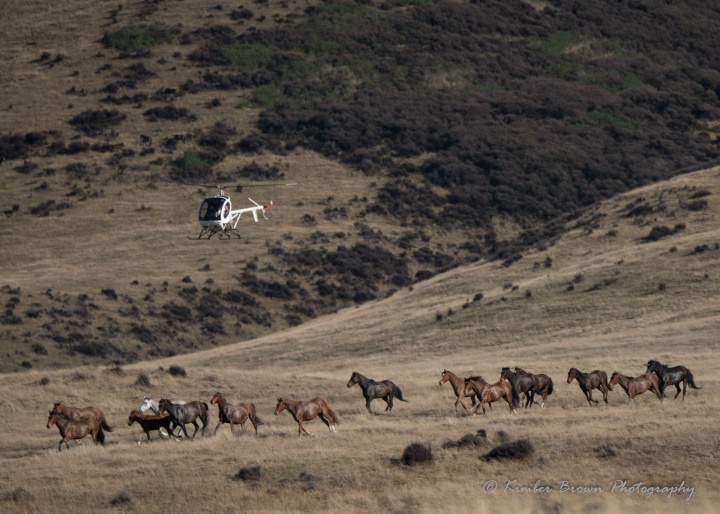Wild horse muster in April
20 March, 2018
Wild horse muster in April

Up to 300 Kaimanawa wild horses may need to be removed this April from the Waiouru Military Training Area (WMTA) during the muster. As many as possible will be homed but all horses not adopted will be destroyed.
The muster is held every two years by the Department of Conservation to manage the herd at the sustainable level of 300 horses within the WMTA as recommended by the Kaimanawa Wild Horse Advisory Group. This number allows for horses in the herd to maintain best condition, and protects the fragile ecosystems unique to the Moawhango Ecological zone.
The re-homing of as many horses as possible is an important part of a successful muster says DOC Operations Manager Dave Lumley.
“Ideally all horses would be adopted, as was the case for the 100 horses mustered in 2016, however we know it’s a real challenge for the groups to find so many suitable homes.”
Dedicated not-for-profit group Kaimanawa Heritage Horses has taken on the task of finding new homes for the wild horses, and will be working hard over the next month taking applications and vetting potential homes.
Kaimanawa Heritage Horses only has applications for 56 horses to date and is hoping the many other applications promised, will come to fruition. “With only two weeks left until applications close, there’s not a lot of time for interested parties to deliberate. It’s a real concern that some people may simply run out of time, resulting in potentially homed horses being trucked to the abattoir”, says KHH Muster Coordinator, Simone Frewin.
Kaimanawa horses are gaining favour among the equestrian community as highly competitive sport horses. They’re the perfect option for those who can’t afford to purchase a $25,000 purpose bred pony but want a chance to be competitive in that class of competition. Since numbers were reduced to 300 individuals in the wild herd, the condition of the horses and their final mature height, has improved immeasurably. “The fact that we’re seeing more Kaimanawa ‘horses’ now rather than just ponies means they’re more suited to a wider variety of riders. It’s devastating to think that many of these horses just won’t have a chance”, says Simone.
The number of horses to be removed was confirmed last week after the annual aerial survey. “With the herd in such good condition the reproduction rate is up at around 30% per year” says Lumley “the population has risen to nearly double the recommended number. A herd greater than 300 not only impacts on the fragile environment and the condition of the horses but also increases the risk of horse migration towards SH1/the Desert Road and the related public safety concerns.”
The unique tussock grassland where the horses roam contains threatened plants, including at least 16 species in the New Zealand Threat Classification System, some of which are found nowhere else in the world. Many of these plants occur in habitats that can sustain very little disturbance from horses.
-Ends-


 Gordon Campbell: On Iran Killing Its Rappers, And Searching For The Invisible Dr. Reti
Gordon Campbell: On Iran Killing Its Rappers, And Searching For The Invisible Dr. Reti Labour Party: National Should Heed Tribunal Warning And Scrap Coalition Commitment With ACT
Labour Party: National Should Heed Tribunal Warning And Scrap Coalition Commitment With ACT Government: Saves Access To Medicines
Government: Saves Access To Medicines Office of the Speaker: Law And Order, Finance, And Defence A Focus For Ukrainian Parliamentary Delegation To NZ
Office of the Speaker: Law And Order, Finance, And Defence A Focus For Ukrainian Parliamentary Delegation To NZ Environmental Defence Society: Fast-track Approvals Bill Presents A Serious Risk To New Zealand Exporters
Environmental Defence Society: Fast-track Approvals Bill Presents A Serious Risk To New Zealand Exporters NZ Government: New Lab To Help Protect Key Pacific Tuna Fisheries
NZ Government: New Lab To Help Protect Key Pacific Tuna Fisheries Susan Botting - Local Democracy Reporter: Ruawai Leader Slams Kaipara Council In Battle Over $400k Property
Susan Botting - Local Democracy Reporter: Ruawai Leader Slams Kaipara Council In Battle Over $400k Property


